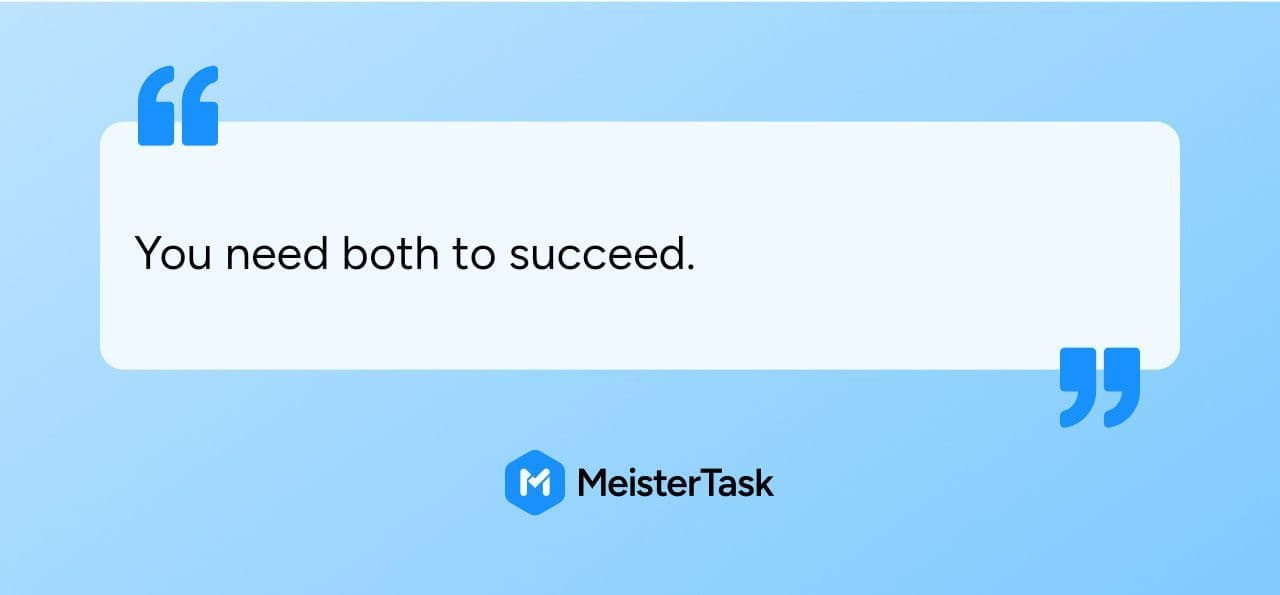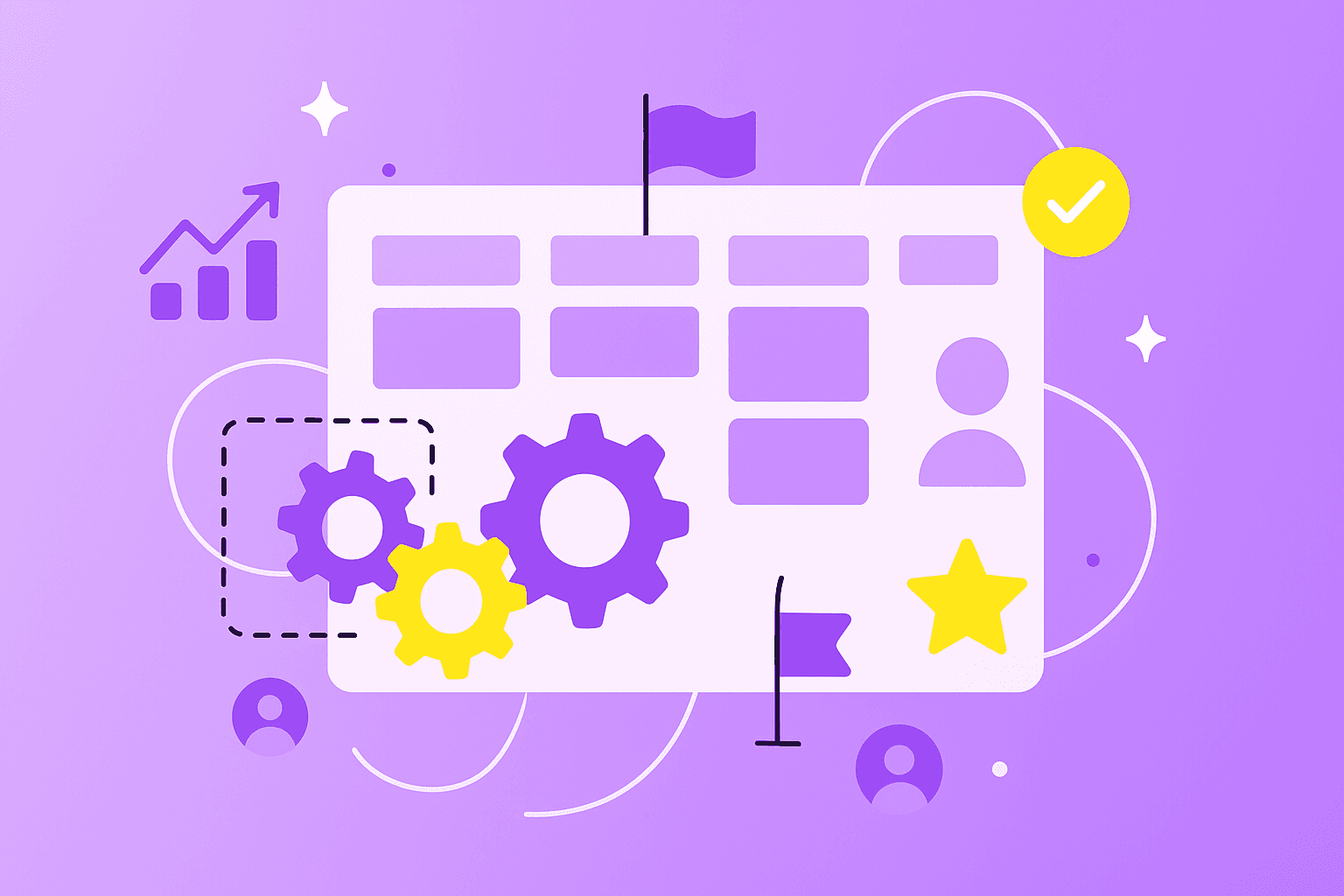Working successfully with change
Picture this: You're six months into a major software implementation when your biggest client requests a complete overhaul of the user interface. Your team freezes, unsure whether to proceed with the original plan or pivot to meet this new demand. This scenario plays out in organizations every day, and without proper project change management, it often leads to chaos, budget overruns and failed initiatives.
Project change management transforms these moments of uncertainty into structured opportunities for improvement. Rather than letting changes derail your project, you can evaluate, approve, and implement modifications while keeping your team aligned and your project on track.
What is change management in project management?
Change management in project management is the structured approach to transitioning individuals, teams, and organizations from a current state to a desired future state within a project context. It combines technical processes for documenting and approving modifications with strategies for helping people adopt and use those changes effectively.
Think of it this way: traditional project management focuses on delivering tasks, timelines, and technical solutions — the "what" of your project. Change management addresses the human side of transitions — the "how" of getting people to actually use what you've built.

Project change management has two main parts:
Technical side: This includes processes for documenting change requests, assessing impacts, and updating project plans
People side: This covers communication strategies, training programs, and techniques for overcoming resistance to new ways of working
Common types of project changes include:
Scope changes: When deliverables or requirements get modified
Schedule changes: When timelines or milestones shift
Resource changes: When team members or budgets change
Process changes: When the way work gets done needs updating
Before diving deeper, let's define some key terms. A change request is a formal document proposing a modification to the project. An impact assessment evaluates how changes affect scope, schedule, and resources. Stakeholders are anyone affected by or influencing the change. Adoption measures how well people embrace and use new processes or tools.
Why project change management matters
Without proper change management, projects quickly spiral into chaos. Teams get confused about shifting priorities, leading to duplicated work and missed deadlines. Resources get wasted on initiatives that fail to gain traction. Frustrated employees resist new processes they don't understand, creating a cycle of failure that's hard to break.
The numbers tell a compelling story. Research shows that projects with excellent change management are seven times more likely to meet their objectives compared to those with poor change management practices. That's the difference between success and expensive failure.
Here's what proper change management looks like in practice:
Aspect
With Change Management
Without Change Management
Team adoption
Engaged and supportive
Resistant and confused
Timeline
Managed adjustments
Unexpected delays
Budget
Controlled modifications
Cost overruns
Outcomes
Aligned with updated goals
Mismatched with needs
Beyond these metrics, effective change management maintains team morale during transitions. When people understand why changes occur and receive support throughout the process, they're more likely to embrace new approaches rather than fight them. This translates directly to business outcomes: higher ROI on projects, improved client satisfaction, and better team retention rates.
Key elements of a change management process
Structured methodology
A structured change management approach gives you a roadmap for navigating transitions. Instead of reacting to changes as they happen, you have documented procedures for how changes get proposed, evaluated, and implemented. This framework provides consistency across projects and helps teams handle transitions systematically.
Even simple projects benefit from basic change frameworks. A startup launching its first product needs change procedures just as much as an enterprise rolling out new systems to thousands of employees. The complexity might differ, but the need for structure remains.
Stakeholder engagement
Stakeholders include anyone affected by or able to influence project changes. Getting their buy-in requires understanding what motivates different groups:
Executives: They want to see business cases and ROI impact.
Team members: They care about how changes affect their daily work
End users: They need clear benefits and support during transitions
sponsors and champions play special roles in successful change. Sponsors provide authority and resources from the top, while champions advocate for change within their teams and model new behaviors. Without these key players, even the best-planned changes can fail.
Communication strategies
Change-specific communication goes beyond regular project updates. It addresses both the practical "what's changing" and the emotional "why should I care" aspects of transitions.
Effective change communication follows these practices:
Explain the why: Help people understand the reasons driving change.
Outline the what: Be specific about what will be different
Address concerns early: Don't wait for resistance to build
Keep messages consistent: Mixed signals create confusion
For example, when introducing new project management software, your communication might explain how current tools create inefficiencies (why), demonstrate the new interface through screenshots or videos (what), address worries about learning curves with training schedules (concerns), and reinforce key messages across team meetings, emails, and documentation (consistency).
Training and support systems
Training needs evolve when project parameters shift. A team comfortable with existing processes requires different support when adopting new methodologies or tools. Support goes beyond formal training sessions — it includes documentation, peer mentoring, practice environments and ongoing coaching.
The goal is meeting people where they are. Some learn best through hands-on practice, others prefer written guides, and many benefit from peer support. Providing multiple support channels increases the chances of successful adoption.
How project management and change management work together
Project management and change management serve complementary functions throughout the project lifecycle. While project management delivers the technical solution, change management makes sure people can and will use it effectively.
These disciplines intersect at multiple points. During planning, change managers assess organizational readiness while project managers define technical requirements. During execution, project managers build solutions while change managers prepare people for adoption. During closure, both measure success against their respective objectives.
Clear responsibilities prevent gaps and overlaps:
project managers own: Technical specifications, development tasks, quality assurance
Change managers own: Stakeholder analysis, resistance management, adoption strategies
Both share: Overall project success and benefits realization
This partnership recognizes a fundamental truth: technical excellence alone doesn't guarantee project benefits.

Success requires both technical delivery and human adoption working in harmony.
Essential tools and techniques for project change management
The right tools make change management more systematic and less overwhelming. Here are the essential ones every project manager should know:
Change request forms capture proposed modifications in a standard format. These documents record what's changing, why it's needed, who's affected, and what resources are required. Standardized forms prevent important details from falling through the cracks.
Impact assessment templates help you evaluate how changes ripple through your project. They examine effects on scope, schedule, budget, resources, risks, and stakeholders. A thorough assessment might reveal that a "simple" software upgrade affects training schedules, support procedures, and integration points you hadn't considered.
Stakeholder analysis matrices map who's affected by changes and their level of influence. This visual tool helps you prioritize engagement efforts and tailor communication strategies. You might discover that the accounting team has more influence over a new expense system than you initially thought.
Communication plans outline key messages, target audiences, delivery channels, and timing. They prevent the confusion that comes from conflicting messages or information gaps. Your plan might specify that executives get monthly summaries while team members receive weekly updates.
Digital tools streamline these processes. Project management platforms can track change requests, document decisions, and monitor implementation progress. Kanban boards visualize change workflows, making status transparent to all team members. When selecting tools, look for options that integrate change tracking with overall project management, like MeisterTask's flexible workflow features that adapt to your team's needs.
Practical steps for managing change
1. Document your baseline
Start by capturing where your project stands right now. Export current task lists, milestone dates, and resource allocations. Screenshot existing workflows and dashboard configurations. This documentation becomes your reference point for measuring change impacts later.
Without a clear baseline, you can't measure what's actually changing or communicate impacts effectively. Think of it as taking a "before" photo — you need it to show the "after" clearly.
2. Analyze change impacts
Look beyond the obvious effects. A simple software upgrade might directly affect system features but indirectly impact training schedules, support procedures, and integration points. Use dependency mapping to trace relationships between project elements. Interview stakeholders to uncover hidden effects.
Visual tools help here. Create flowcharts showing how changes cascade through your project. Use heat maps to highlight areas of highest impact. The goal is helping everyone grasp the full scope of what's changing.
3. Communicate with clarity and empathy
Tailor your messages to what each group cares about. Executives want strategic implications summarized concisely. Team members need detailed implementation guidance. End users care about practical impacts on their daily work.
Address the psychological side of change too. People worry about their status, certainty,autonomy, relationships and fairness. Acknowledge expertise to address status concerns. Provide clear timelines for certainty. Offer choices where possible to preserve autonomy. Maintain team connections for relationships. Use transparent decision-making for fairness.
4. Update everything systematically
Execute changes by updating all project artifacts:
Project plans: Reflect new timelines and dependencies.
Task assignments: Reassign work based on new requirements
Resource allocations: Adjust budgets and team assignments
Documentation: Update procedures and guidelines
Use version control religiously. Archive originals before making changes. Track who changed what and when. This audit trail supports both troubleshooting and compliance requirements.
5. Monitor adoption and adjust
Success goes beyond technical implementation. Track whether people actually use new approaches through adoption rates, proficiency levels, and benefit realization. Gather both numbers and stories — quantitative data shows what's happening, while qualitative feedback explains why.
Reinforce positive changes by sharing success stories, recognizing early adopters, and addressing lingering resistance with targeted support. Build new approaches into standard procedures to prevent backsliding.
Moving forward with confidence
Project change management combines structured processes with human understanding. Success comes from acknowledging that change affects people as much as plans, and both elements need careful attention.
Start small to build your change management skills. Practice with low-risk changes first. Document what works and what doesn't. Gradually tackle more complex changes as your confidence grows.
Digital tools can simplify change tracking and implementation by providing centralized visibility and collaborative features.

